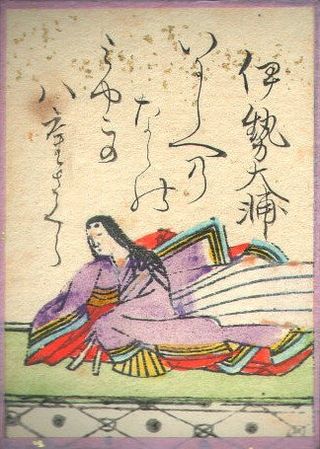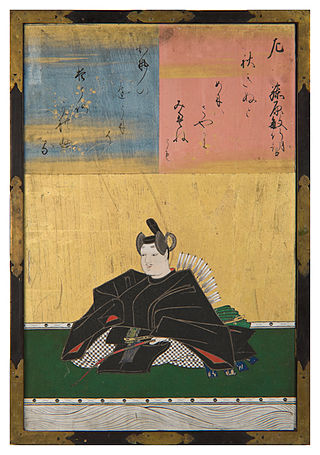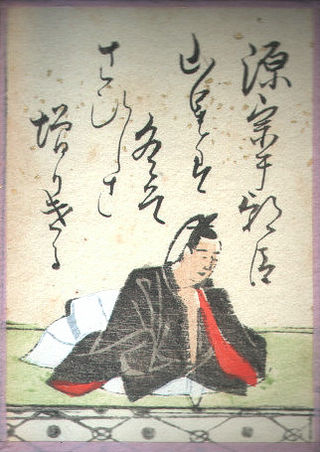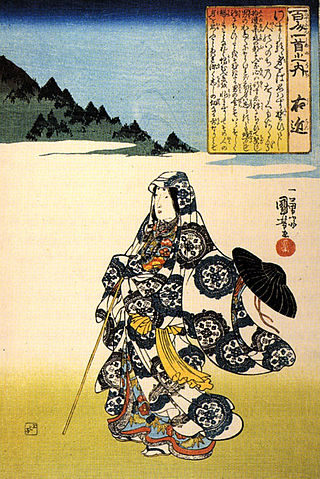
Hyakunin Isshu (百人一首) is a classical Japanese anthology of one hundred Japanese waka by one hundred poets. Hyakunin isshu can be translated to "one hundred people, one poem [each]"; it can also refer to the card game of uta-garuta, which uses a deck composed of cards based on the Hyakunin Isshu.
Years link to the corresponding "[year] in poetry" articles.
Years link to corresponding "[year] in poetry" articles.

Ise no Taifu (伊勢大輔), also known as Ise no Tayū or Ise no Ōsuke, was a Japanese waka poet active in the later Heian period.

Fujiwara no Atsutada was a mid-Heian waka and Japanese nobleman.

Fujiwara no Asatada was a middle Heian waka and Japanese nobleman. He was designated a member of the Thirty-six Poetry Immortals and one of his poems is included in the famous anthology Hyakunin Isshu.

Fujiwara no Kanesuke, also known as the Riverbank Middle Counselor, was a middle Heian-period waka poet and Japanese nobleman. He is designated as a member of the Thirty-six Poetry Immortals.

Fujiwara no Okikaze was an early 10th Century middle Heian waka poet and Japanese nobleman. He was a great-grandchild of Fujiwara no Hamanari. He is designated as a member of the Thirty-six Poetry Immortals. 38 of his poems are included in the anthologies compiled by the imperial order following Kokin Wakashū. One of his poems is included in the famous anthology Hyakunin Isshu.

Fujiwara no Toshiyuki was a middle Heian waka poet and Japanese nobleman. He was designated a member of the Thirty-six Poetry Immortals, and one of his poems is included in the famous anthology Hyakunin Isshu.

Minamoto no Muneyuki (?-939) was an early Heian waka poet and nobleman. He was a grandson of Emperor Kōkō.

Minamoto no Shigeyuki was an early Heian waka poet and nobleman. He was designated a member of the Thirty-six Poetry Immortals and one of his poems is included in the famous anthology Hyakunin Isshu. His remaining works include a poetry collection known as the Shigeyukishū (重之集).
Nationality words link to articles with information on the nation's poetry or literature.

Ukon (右近) was a Japanese poet of the Heian period. She was also a lady-in-waiting of Lady Onshi, consort of Emperor Daigo.

Fujiwara no Sadayori was a Japanese waka poet of the mid-Heian period. One of his poems was included in the Ogura Hyakunin Isshu. He produced a private collection.

Fujiwara no Sanekata was a Japanese waka poet of the mid-Heian period. One of his poems was included in the Ogura Hyakunin Isshu. He left a private waka collection, the Sanekata-shū.

Shun'e, also known as Tayū no Kimi (大夫公), was a Japanese waka poet of the late-Heian period. One of his poems was included in the Ogura Hyakunin Isshu. He produced a private collection, the Rin'yō Wakashū, and was listed as one of the Late Classical Thirty-Six Immortals of Poetry.













